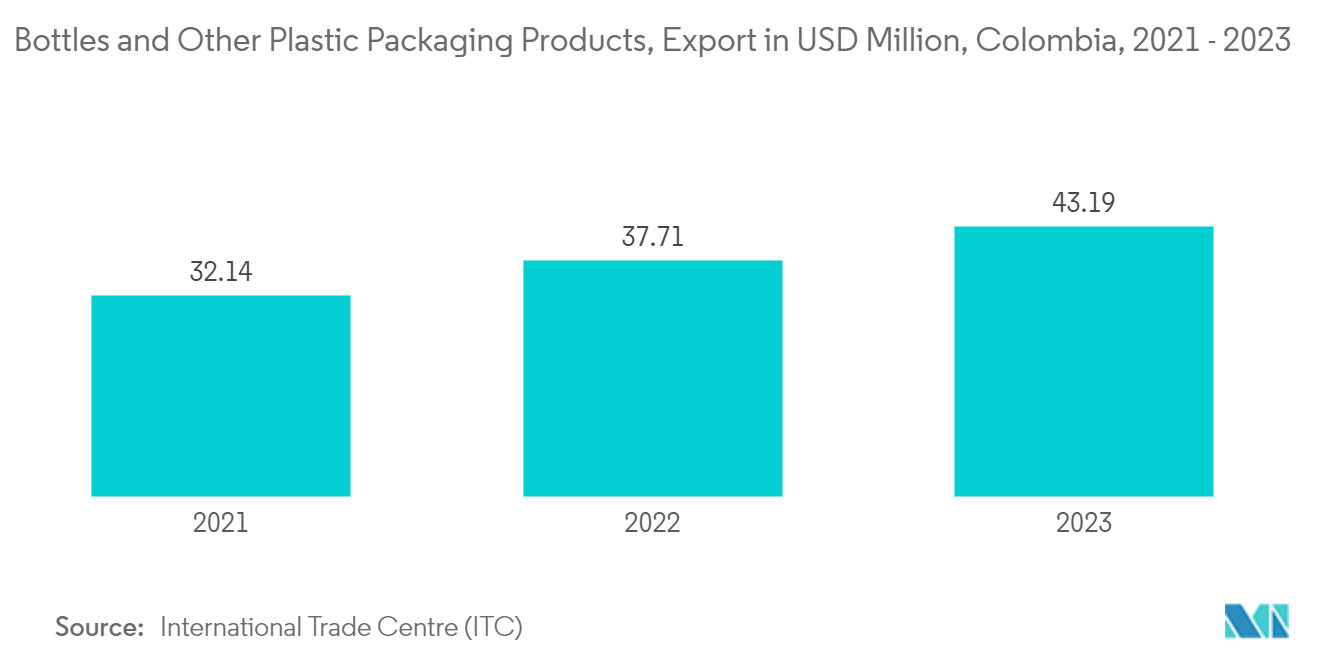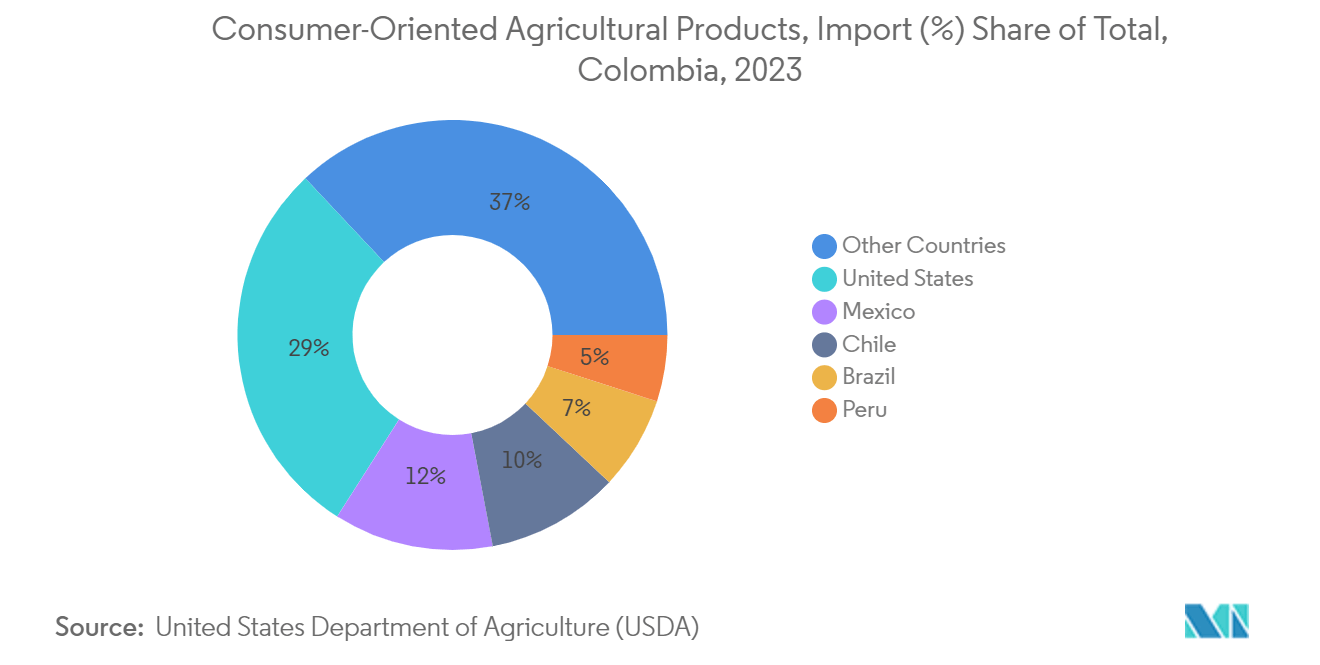Market Trends of Colombia Rigid Plastic Packaging Industry
Polyethylene Terephthalate (PET) Segment is Estimated to Have the Largest Market Share
- In the packaging industry, PET (polyethylene terephthalate) has become a pivotal material due to its lightweight nature and recyclability. In Colombia, PET is the preferred packaging choice across various industries, finding applications in bottles, containers, trays, caps, and closures. Furthermore, its high-strength barrier properties and versatility make PET a favored option for thermoforming. This resistance to tampering and external influences underscores PET's suitability for sensitive applications, including food containers and non-alcoholic beverage bottles.
- Colombia ranks third in Latin America's pharmaceutical market, trailing only Brazil and Mexico. The growth of Colombia's pharmaceutical sector can be linked to its expanding population, a favorable economic environment, and government initiatives aimed at enhancing medicine accessibility. These initiatives include broadening health insurance and ensuring affordable drug coverage. Major players such as Boston Scientific and Johnson & Johnson have established pharmaceutical production in Colombia, fueling the demand for PET-based rigid plastic packaging solutions, including bottles, jars, and trays.
- Colombia's burgeoning middle class and the rising trend of ready-to-drink beverages among younger consumers propel the demand for non-alcoholic drinks. USDA data highlights significant growth in the beverage sector, particularly for flavored water, soft drinks, and juices, all of which are predominantly packaged in PET bottles. With a per capita consumption of 131.4 liters (34.71 gallons) annually, the momentum for the market’s growth is evident.
- Colombia's increasing exports of plastic packaging products, especially bottles, significantly bolstered the market’s growth. Data from the International Trade Centre (ITC) reveals that in 2023, Colombia's plastic product exports reached a value of USD 43.19 million, marking a surge of over 14% from the previous year. The primary export destinations included the United States, Ecuador, and the Dominican Republic.

Food Segment Expected to Dominate the Market
- The USDA reports that Colombia is a net importer of numerous food ingredients. Colombia's National Business Association (ANDI) highlights that the nation's food industry is home to 45,000 registered companies, with a notable 98% classified as small to midsize enterprises. While primarily catering to the domestic market, Colombia's food industry extends its reach, exporting to 140 countries, thereby fueling the demand for rigid plastic packaging solutions.
- Moreover, there is a rising appetite in Colombia for healthier snacks that emphasize minimal use of preservatives, additives, and chemicals. This trend and heightened health and environmental consciousness open avenues for healthy and sustainable food products. Notably, 78% of Colombians are interested in pursuing a healthier lifestyle, further energizing market growth.
- In Colombia, manufacturers such as Amcor Group GmbH and Alpla prioritize high-barrier plastic packaging, aiming for extended shelf life and minimizing food waste. These industry leaders are harnessing materials such as PE, PP, and PET, known for their sealing properties, to craft leak-proof packaging solutions tailored for food applications.
- Colombia predominantly imports food ingredients from the United States and Mexico to meet the surging consumer demand for premium food products. Data from the USDA reveals that in 2023, the United States led Colombia's agricultural imports (29%), followed by Mexico (12%) and Chile (10%).


